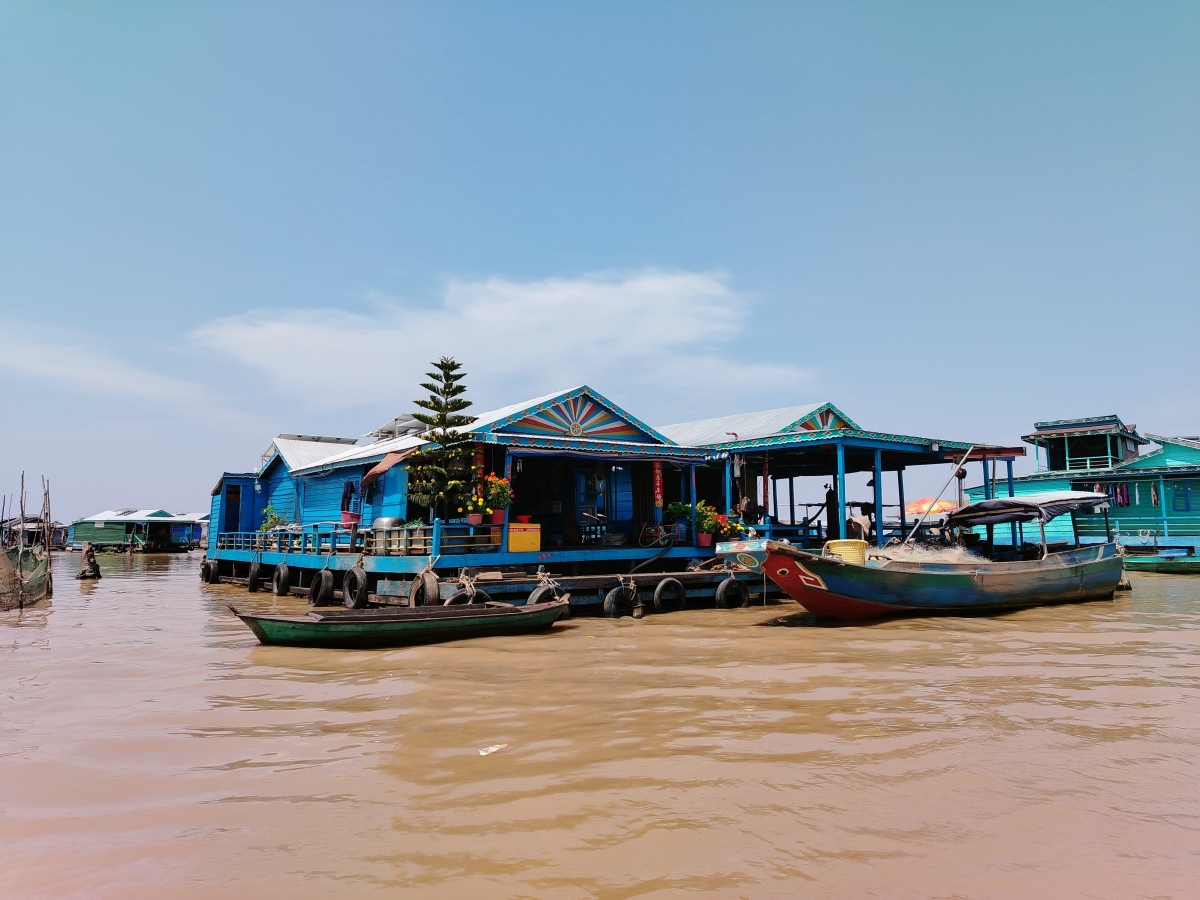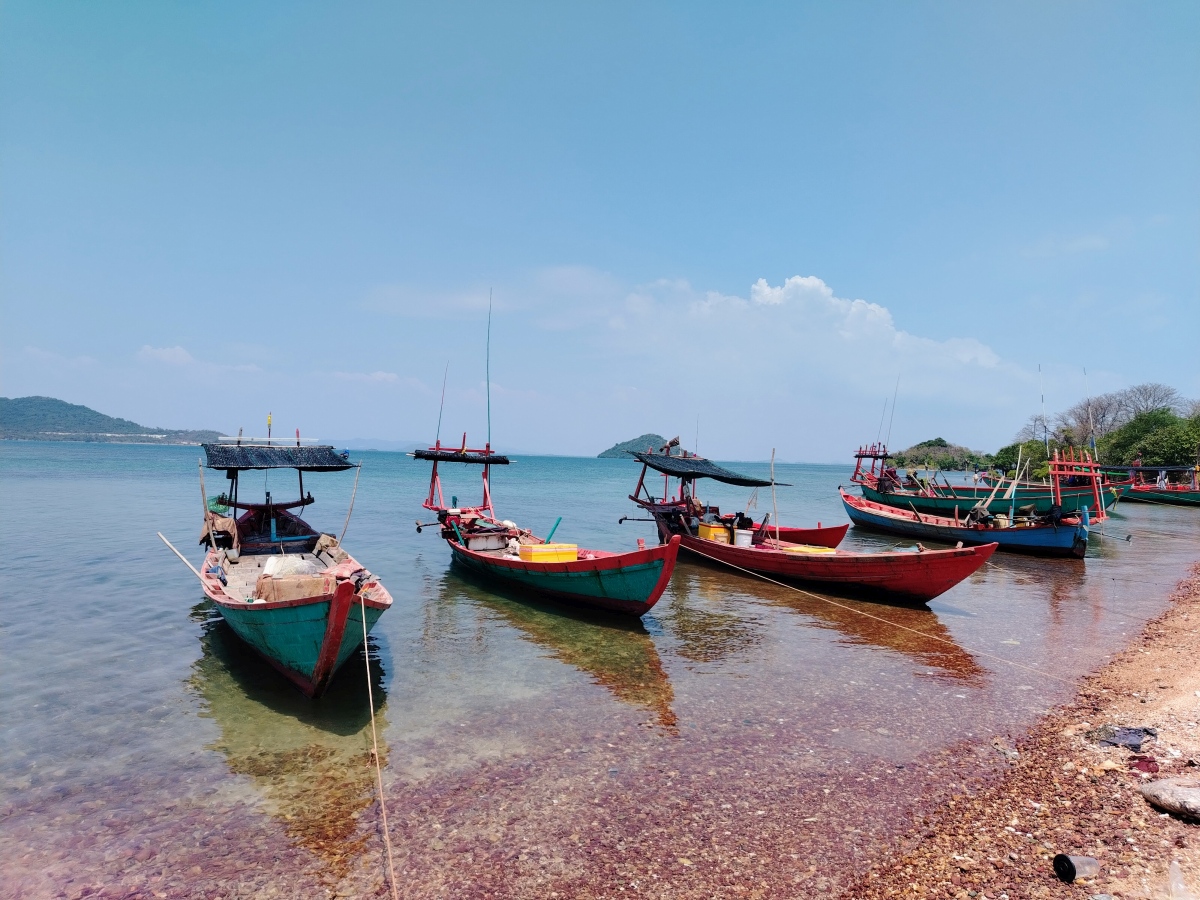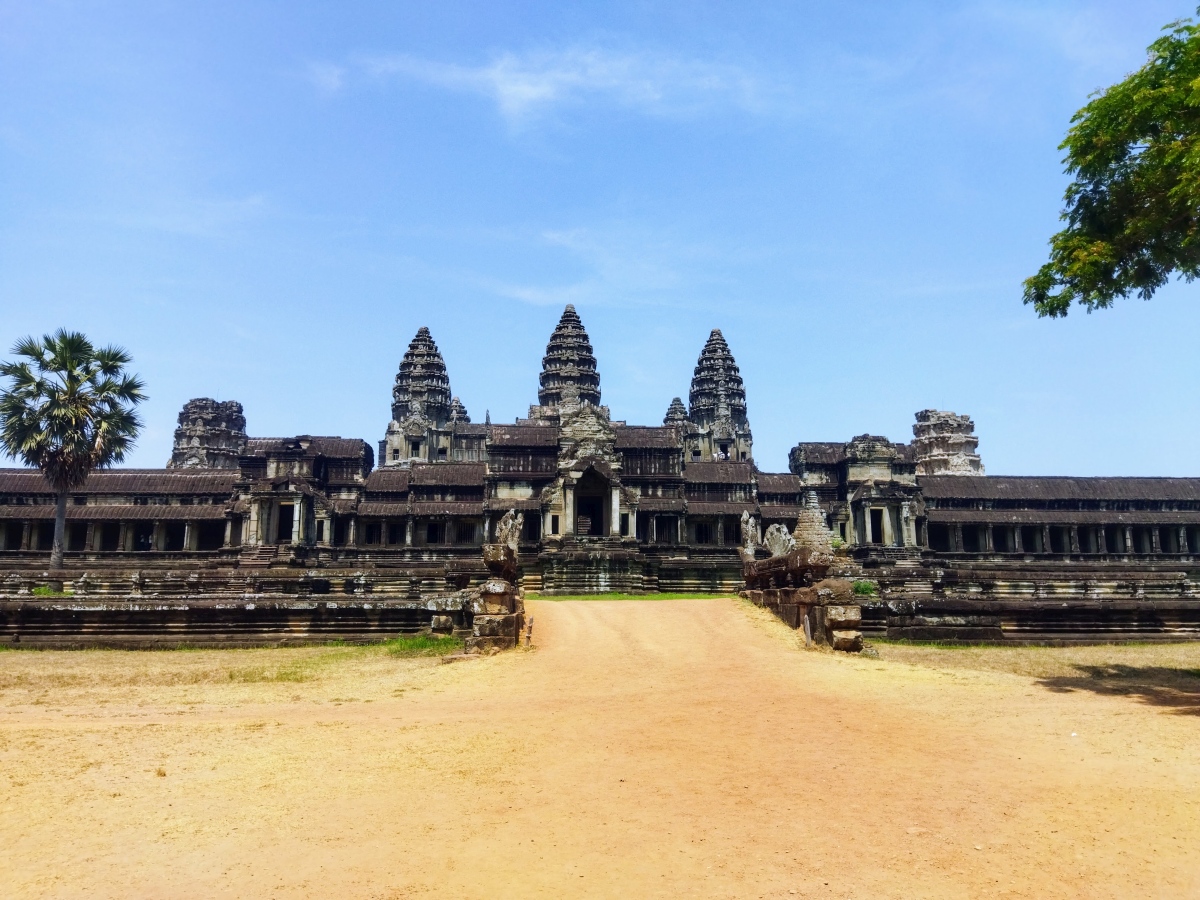Tonlé Sap is no ordinary lake
It swells and breathes with the rhythm of the Mekong, transforming itself each year from a quiet expanse of water into a vast inland sea, one of the most productive freshwater ecosystems in the world. For centuries, entire communities have adapted to its seasonal moods, building homes that float or rise above the floodplain, navigating canals that appear and vanish with the rains, and shaping a culture unlike any other in Southeast Asia.
Kompong Phluk – A Village on Stilts
Only an hour from Siem Reap, the village of Kompong Phluk rises from the floodplain like a vision from another world. Towering wooden houses perch on spindly stilts, some more than eight meters high. In the wet season, water laps at the bamboo stairs of each home. Children paddle to school in wooden canoes, and the village becomes a network of waterways flanked by mangrove trees submerged up to their branches.
When the lake retreats in the dry months, a different Kompong Phluk is revealed — a skeletal forest of stilts, narrow dirt paths, and wooden ladders connecting the village like scaffolding. Time moves slowly here, and the soft chant from the village pagoda blends with the cries of birds and the knock of carpenters repairing boats for the next season.
Kompong Khleang – Wide Waters and Floating Communities
Further away lies Kompong Khleang, larger, quieter, and far less visited than its neighbor. While Kompong Phluk has become a popular day-trip, Khleang still feels like a living, breathing community untouched by crowds. Its name, meaning “storage harbor,” hints at its historical role as a fishing hub.
Here, life floats in every sense of the word. Pagodas, schools, clinics — even entire neighborhoods — rest on pontoons that drift with the current. It is not uncommon to see a floating church anchored near a Vietnamese household, or a village meeting taking place aboard a tethered platform under a tarpaulin roof.
Khmer and Vietnamese families live side by side, each with their own customs, languages, and shrines, yet sharing the same water, the same fish, and the same sunbaked sky. Despite their differences, they have found a way to coexist in this aquatic mosaic.
Kampong Luong – The Village That Moves
Perhaps the most remarkable floating village lies far from Siem Reap, midway between Battambang and Phnom Penh. Kampong Luong, nestled near the town of Krakor, is a world unto itself. Unlike the other villages, there are no stilt houses here — the entire settlement floats, shifting with the seasons like a fleet of dreams.
The village is a patchwork of color and movement. There are boat-shops, floating petrol stations, noodle vendors with stoves aboard, and mobile hardware stores navigating the canals like amphibious tuk-tuks. Buddhist monks paddle to morning alms across the water, and children play soccer on floating bamboo mats that bend with every step.
When the rains come, the whole village gently drifts further inland; when the dry season returns, it glides back toward open water. It is a village that migrates without ever leaving home.
The Rhythm of the Lake
What binds these communities is not just their physical environment, but a way of life shaped by movement, balance, and survival. The Tonlé Sap lake expands from roughly 2,500 square kilometers in the dry season to over 15,000 in the wet season.
This dramatic change is caused by a hydrological phenomenon unique in the world: during the monsoon, the Mekong River reverses its flow, pushing water back into the Tonlé Sap through a narrow tributary, effectively turning it into a reservoir.
With the water come fish — millions of them — and with the fish comes life. The lake provides over 70% of Cambodia’s protein, and for the villagers who live upon it, fishing is more than a livelihood; it is a spiritual and ecological pact with the water.
A World Apart
These floating villages are not museums. They are not “attractions.” They are homes, shaped by adaptation and ingenuity, hardship and grace. They are places where boats replace buses, where monks sail instead of walk, and where temples rise above the floodplain as symbols of faith, resilience, and hope.
To visit them is to glimpse a Cambodia that lives not in ruins or monuments, but in the movement of water, the smell of fish paste drying in the sun, and the laughter of children in boats. It is to witness a form of human life that floats gently on the edge of the possible.



